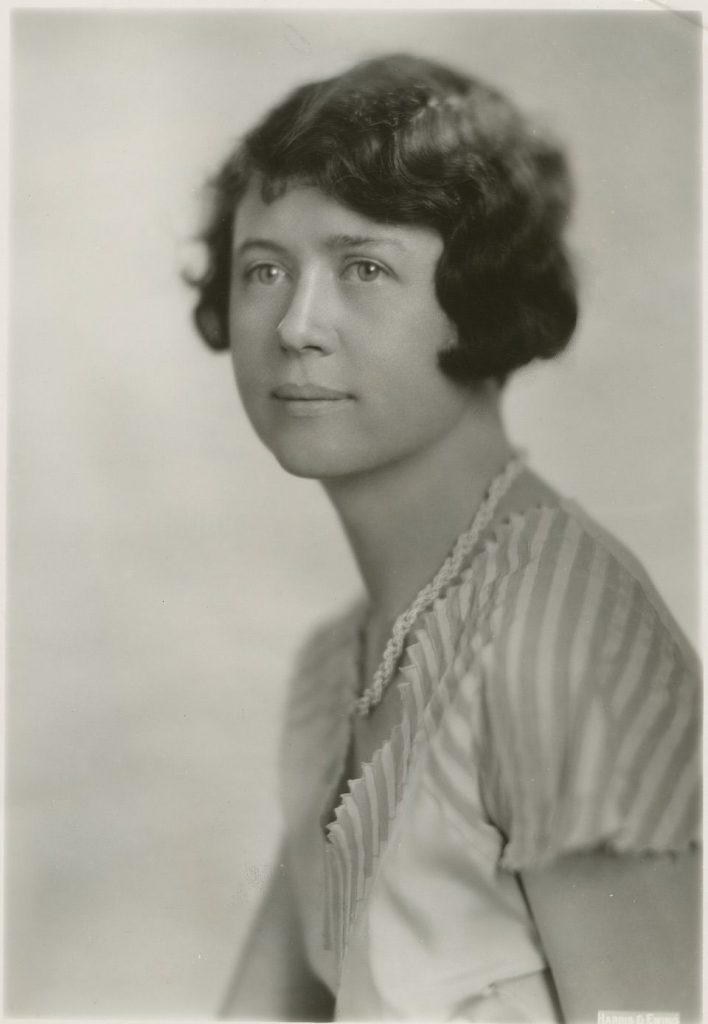Imagine my surprise to learn that the first female scientist, Louella Cable, at the U.S. Bureau of Fisheries, now the U.S. Fish and Wildlife Service, hailed from South Dakota – my home state. She attended the same university where my parents once worked, and we are delighted that guest author Ben Ikenson contributed this article. ~BB
A Google search for “Louella Cable” produces some enthrallingly esoteric results, among the first, a publication available through Amazon: “Plankton (Fishery leaflet) Unknown Binding – 1966”; or a 1967 prototype for digital fish-measuring calipers; or, perhaps, the fish named in her honor – “Cable’s goby” – in 1933.

It’s a somehow fitting tribute to Dr. Cable who was, above all, a devoted aquatic biologist — and the first female scientist hired by the U.S. Bureau of Fisheries, the predecessor of the U.S. Fish and Wildlife Service, in 1927.
“Louella was the consummate scientist,” recalls Thomas Todd, a now retired U.S. Geological Survey fisheries expert who began his life’s work on Great Lakes whitefishes with Dr. Cable after she herself had retired from federal service in 1970. “When I was a young fisheries biologist, she was always generous to offer her ear and her expertise, which made a huge impression on me. The work we did together continued to provide fruitful research throughout my career, and we became friends for the rest of her life.”
Born and raised in South Dakota, Louella Cable attended the University of South Dakota, where she became the school’s first graduate student to study fisheries, earning a master’s degree for her work on the foods of catfish.
A superb scientific illustrator, Cable spent her first year with the government sketching fish species at the federal biological laboratory at Beaufort, North Carolina. (She would later illustrate the goby species that was subsequently named for her.) At the lab, she spent five years studying commercial fisheries with Dr. Samuel Hildebrand, a pioneer in the study of systematic ichthyology with whom she published several important articles.
Indeed, Hildebrand and Cable were at the forefront of early fish identification. According to records, in 1929, “24 local fish species had been described ‘more or less completely’ through a series of drawings illustrating their stages of development. At the time, culture methods had not been developed to enable keeping fish eggs or early larval forms in aquaria through their development – so most of these early series were drawn from individual specimens caught from the wild at various times and at different stages of development.”
In the summers of 1929 and 1930, Dr. Cable successfully reared several fish through their larval stages in the lab, a ground-breaking achievement for the study of early life history of fishes. During this period, she helped identify previously unknown larval stages of many species, including the spot, croaker, gray trout, menhaden, and pigfish.
In 1937, Dr. Cable joined the newly organized Atlantic Coast Shad Investigation Team in Charleston, South Carolina, where she worked for several years on various aspects of the ecology and early life history of the American shad.
In 1950, a decade after the U.S. Bureau of Fisheries became the Fish and Wildlife Service, she transferred to the Great Lakes Fishery Investigation Center, in Ann Arbor, Michigan, to study ciscoes of the Great Lakes. Here, in 1959, she earned a PhD from the University of Michigan, studying the scales and growth of marked lake trout in Lake Michigan.
As with so much of her work, Dr. Cable’s research in Michigan had profound and lasting impacts, according to Charles Bronte, director of the Service’s Great Lakes Fish Tagging and Recovery Lab. “As a young Service biologist tasked with working on lake trout restoration, her publication (published the year I was born) on the validity of aging these fish with scales was one of the first papers I read. The level of detail and scholarship she devoted to such a seemingly mundane topic was a model for me to strive for.”
Dr. Cable went on to write and illustrate several well-known publications on a range of ichthyology subjects throughout the remainder of her government career. And even after retiring from the Fish and Wildlife Service in 1970 at the age of 70, she remained active in her research and art, even mentoring proteges like Mr. Todd, the young biologist with whom she worked on issues pertaining to Great Lakes whitefishes. When she died in 1986, an annual scholarship fund was established in her name at her alma mater, the University of South Dakota, for promising undergraduate biology students.
-Ben Ikenson/USFWS
A more detailed profile of Dr. Cable and her work will appear in a forthcoming U.S. Fish and Wildlife Service book (as yet untitled) that documents the history of fisheries work by the federal agency on the occasion of its 150th anniversary in 2021.
The Women's Outdoor News, aka The WON, features news, reviews and stories about women who are shooting, hunting, fishing and actively engaging in outdoor adventure. This publication is for women, by women. View all posts by The WON